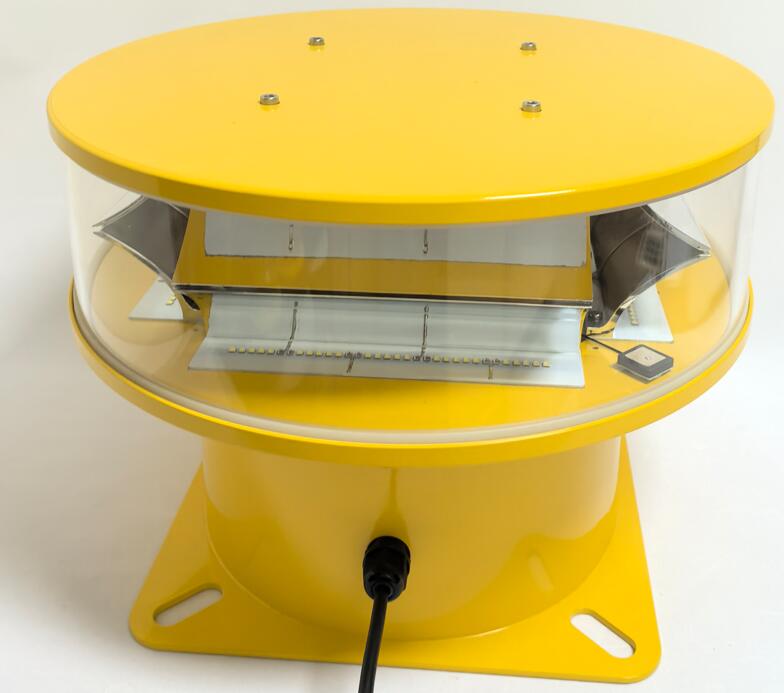Aircraft Obstruction Warning Lights: The Silent Protectors of Modern Aviation
In an era where air traffic density reaches unprecedented levels, aircraft obstruction warning lights have become indispensable safety features in our skies. These specialized lighting systems serve as constant visual sentinels, protecting both manned and unmanned aircraft from potential collisions with tall structures. As urban landscapes grow vertically and wind farms expand horizontally, the strategic implementation of aircraft obstruction warning lights has evolved into both an art and science of aviation safety.
The Critical Safety Role of Aircraft Obstruction Warning Lights
Visual Protection in All Conditions
Modern aircraft obstruction warning lights provide:
24/7 visibility through rain, fog, and darkness
Clear identification of hazards for pilots and drone operators
Compliance with evolving international aviation regulations
Regulatory Framework and Standards
Global aviation authorities maintain strict requirements:
ICAO Annex 14: Specifies light intensity and flash characteristics
FAA AC 70/7460-1L: Details obstruction marking standards

EASA CS-ADR-DSN: European guidelines for light placement
Technical Specifications and System Variations
Classification by Light Intensity
Aircraft obstruction warning lights are categorized into three primary types:
Low-Intensity Systems (L-864)
For structures below 45 meters (148 feet)
Steady-burning red lamps with FAA L-810 certification
| aircraft obstruction warning lights |
Medium-Intensity Systems (M-864)
For structures 45-150 meters (148-492 feet)
Dual-mode red/white lights with specific flash patterns
High-Intensity Systems (H-864)
For structures exceeding 150 meters (492 feet)
| aircraft obstruction warning light |
Xenon strobes or LED arrays with daylight visibility
Cutting-Edge Lighting Technologies
Modern systems incorporate:
Solid-state LED technology with 100,000+ hour lifespans
Automatic photocell activation at dusk
Remote monitoring via wireless networks
Synchronized flash patterns across multiple structures
Strategic Applications Across Industries
Urban Infrastructure Protection
Critical installations include:
Skyscrapers and high-rise buildings
Telecommunication towers
Bridge support structures
Renewable Energy Sector
Essential for:
Offshore and onshore wind turbines
Solar power tower installations
Hydroelectric dam structures
Aviation-Specific Facilities
Vital protection for:
Airport control towers
Radar installations
Approach lighting systems
Emerging Technologies and Future Trends
Smart Lighting Systems
Next-generation developments feature:
Aircraft detection-activated lighting
Dynamic intensity adjustment based on weather conditions
Predictive maintenance through IoT sensors
Sustainable Solutions
Industry innovations include:
Solar-powered autonomous units
Energy-efficient LED configurations
Wildlife-friendly lighting spectra
Enhanced Visibility Systems
Advanced concepts in development:
Laser-assisted perimeter marking
Multi-spectral visibility enhancements
3D spatial awareness lighting arrays
Implementation Challenges and Solutions
Environmental Considerations
Addressing key concerns through:
Dark-sky compliant designs
Minimal ecological impact configurations
Weather-resistant engineering
Maintenance Optimization
Improved via:
Modular component designs
Self-diagnosing systems
Remote performance monitoring
Global Standardization Efforts
Ongoing initiatives to:
Harmonize international regulations
Develop universal testing protocols
Establish best practice guidelines
Aircraft obstruction warning lights represent a critical component of modern aviation safety infrastructure, continuously evolving to meet the challenges of increasingly crowded airspace. As our built environment grows more complex and air traffic patterns more dense, these lighting systems will play an even more vital role in collision prevention. The future of aircraft obstruction warning lights lies in smarter, more sustainable solutions that maintain the highest safety standards while adapting to technological and environmental changes. Their persistent glow will continue to serve as beacons of protection in our three-dimensional transportation networks, safeguarding both human lives and valuable aviation assets around the clock. In the silent language of flashing lights, they communicate the essential message of aviation safety: "See and be seen."
